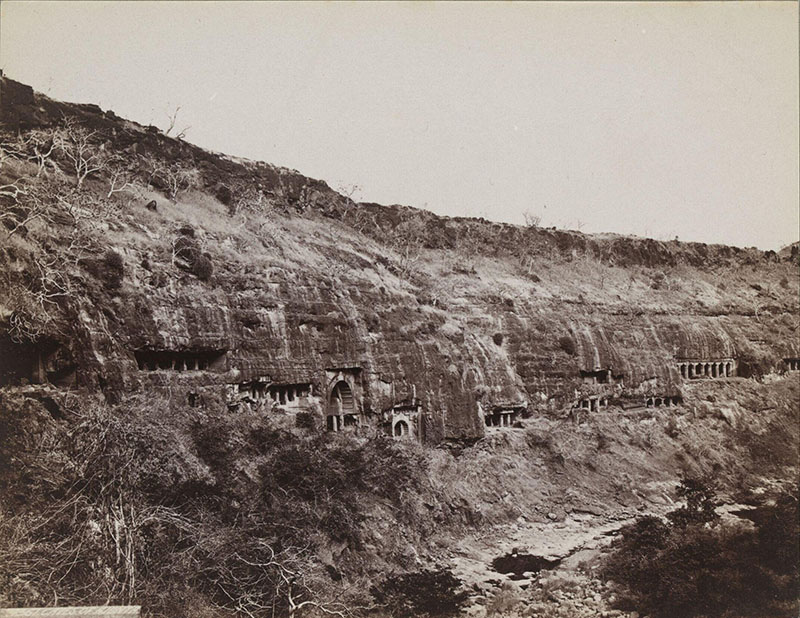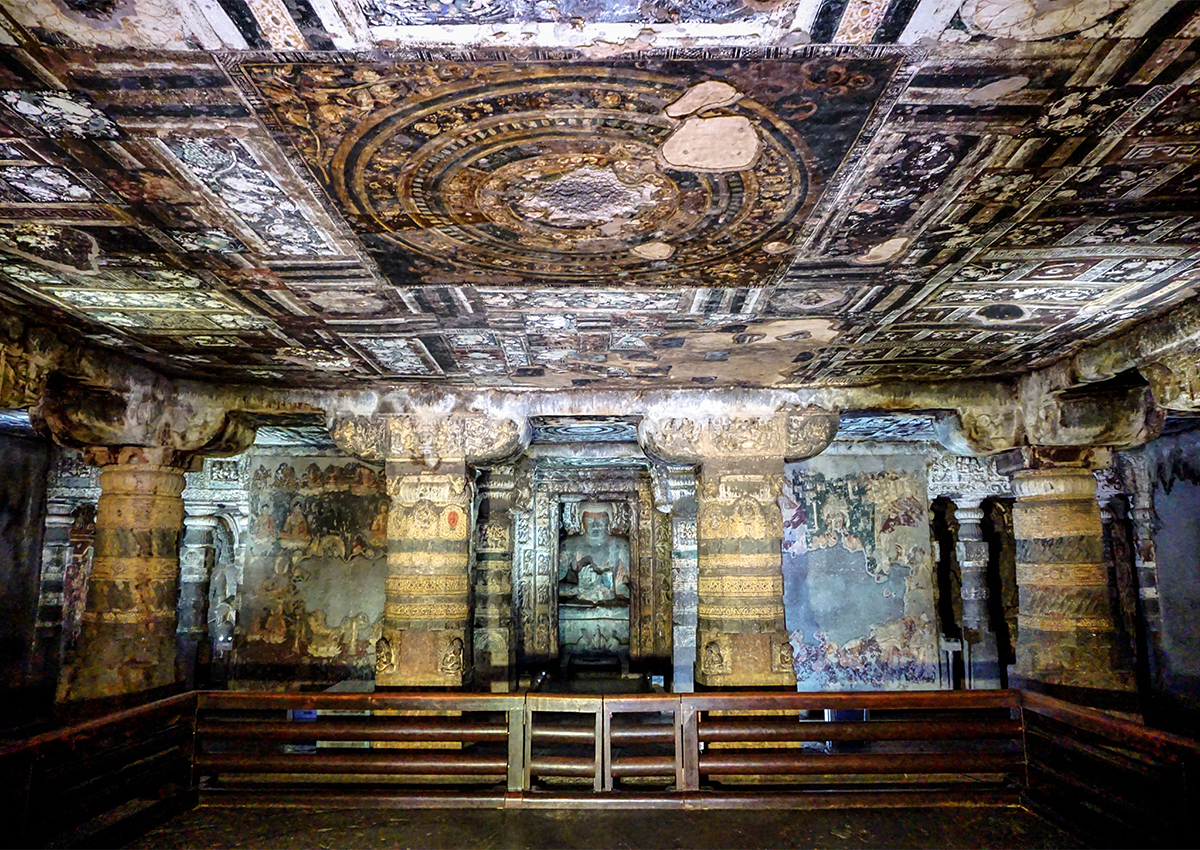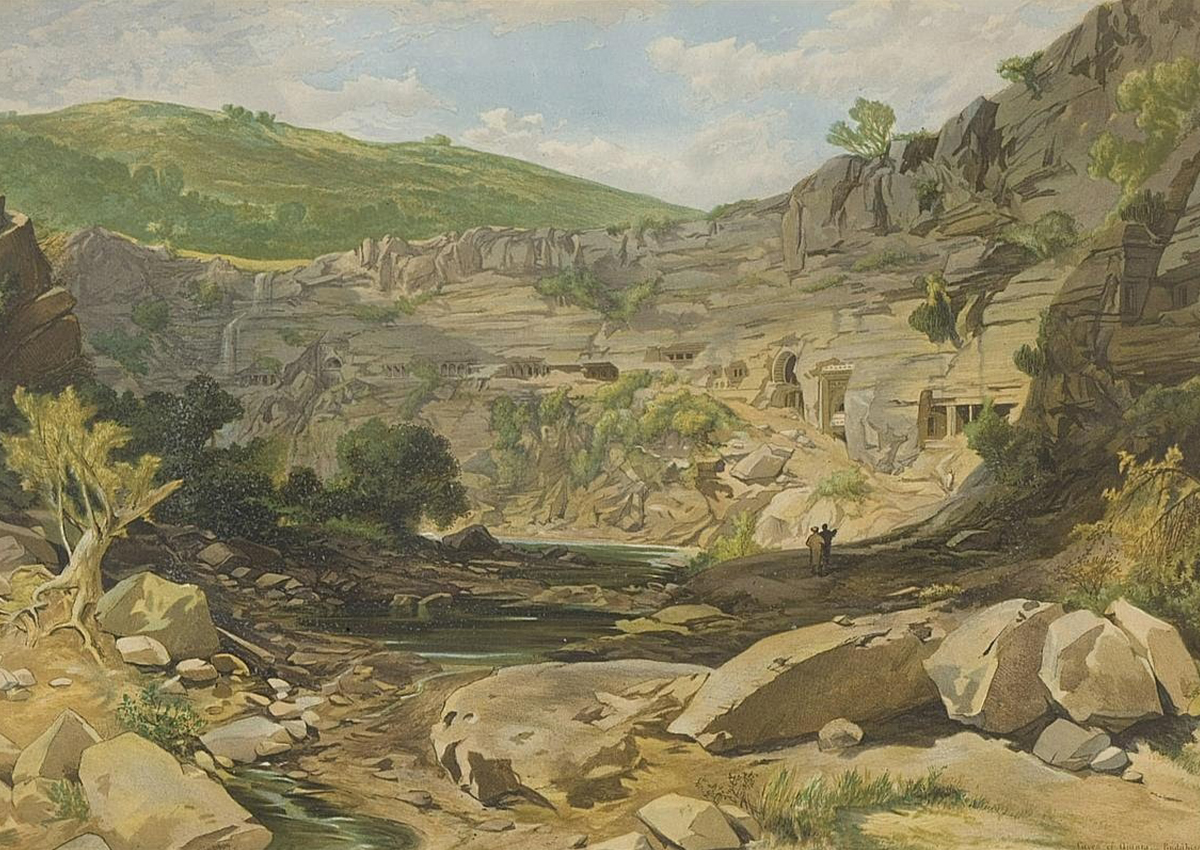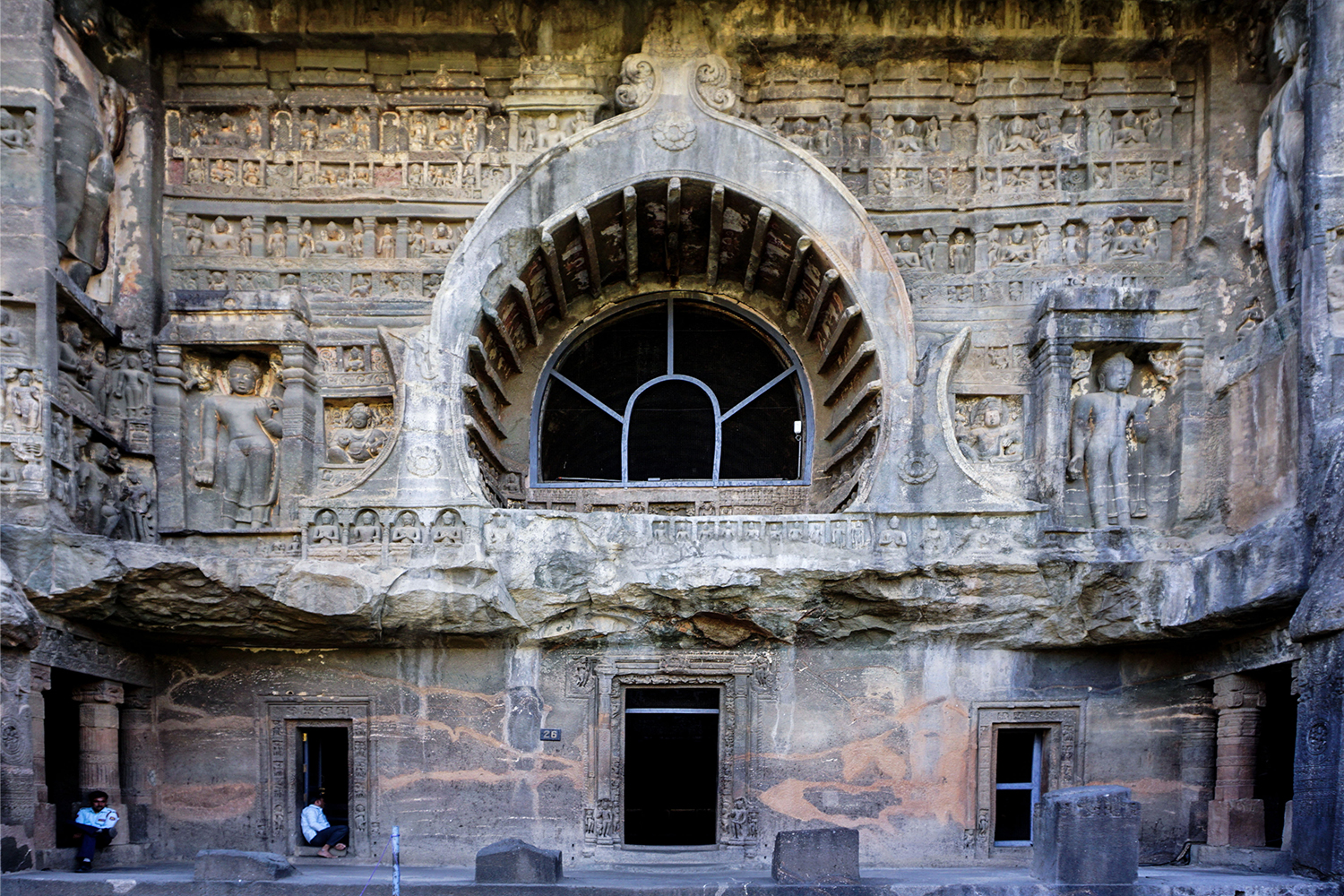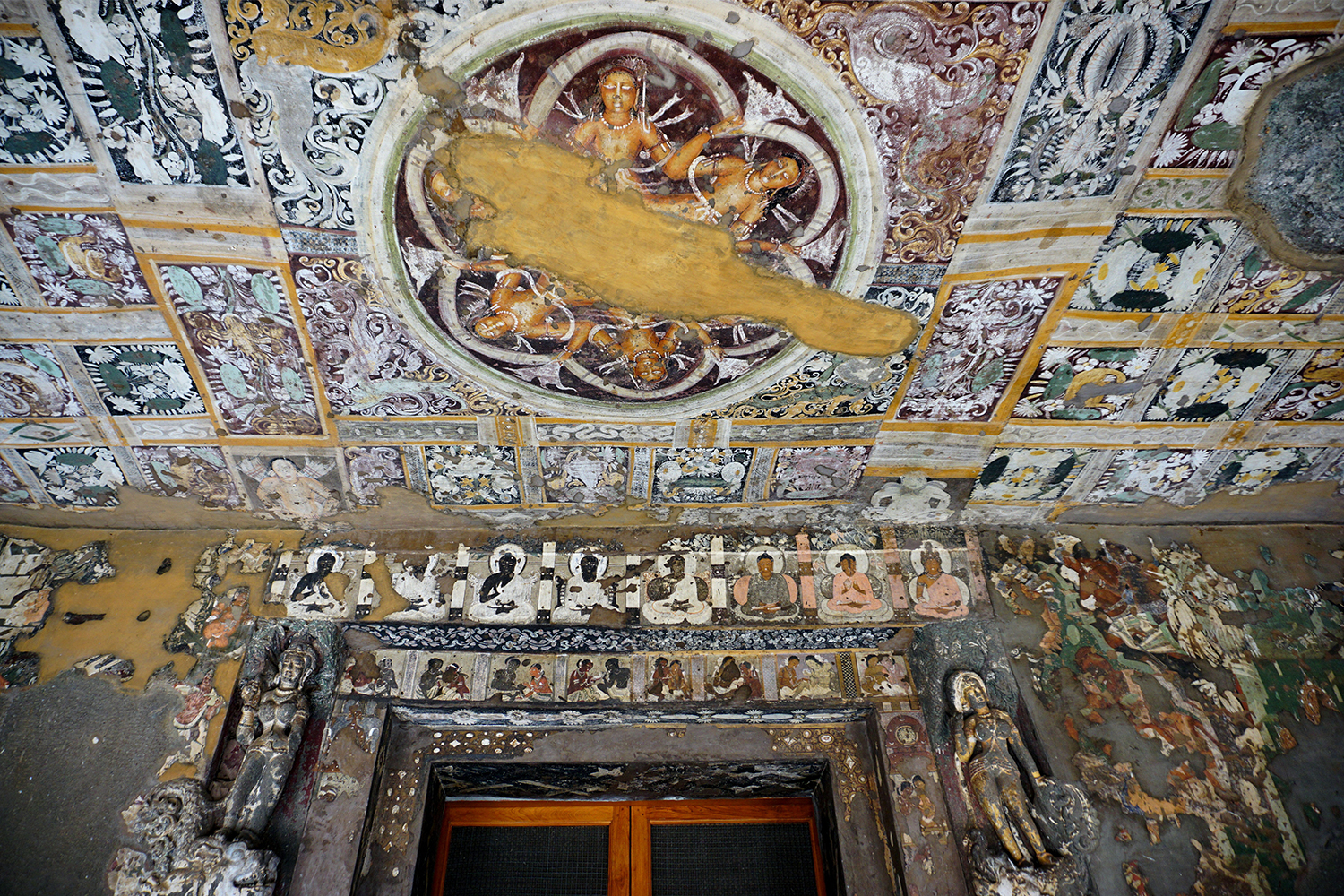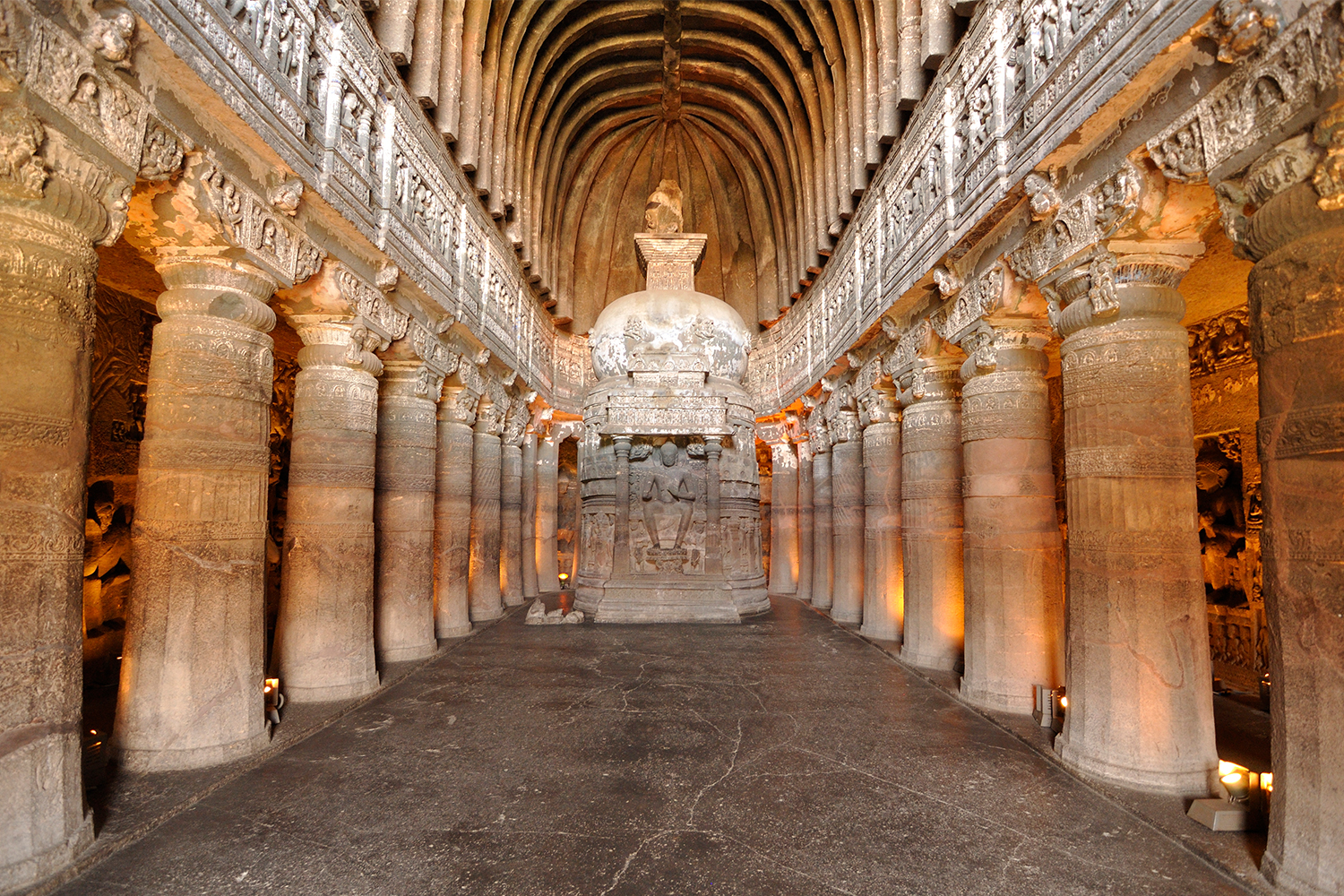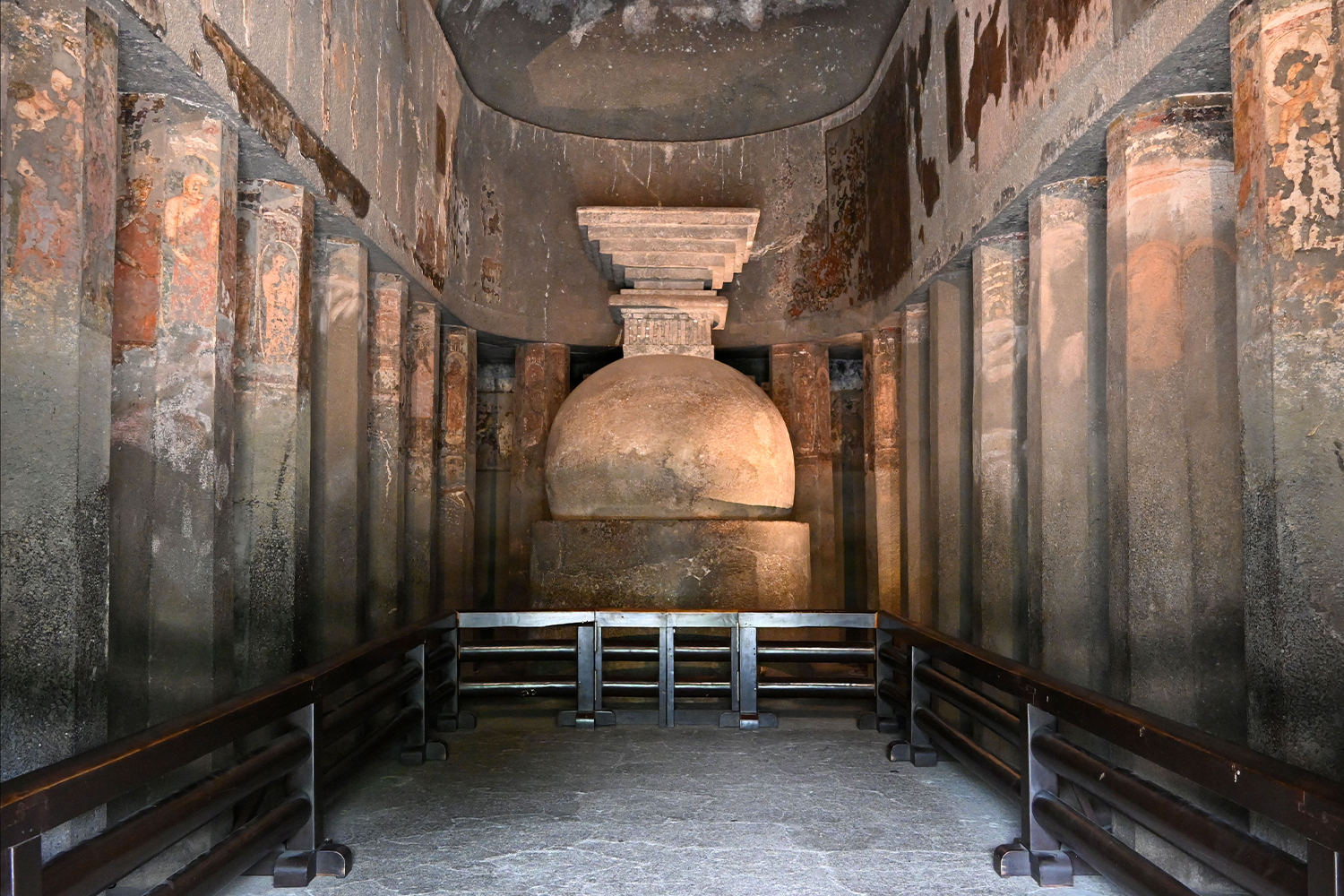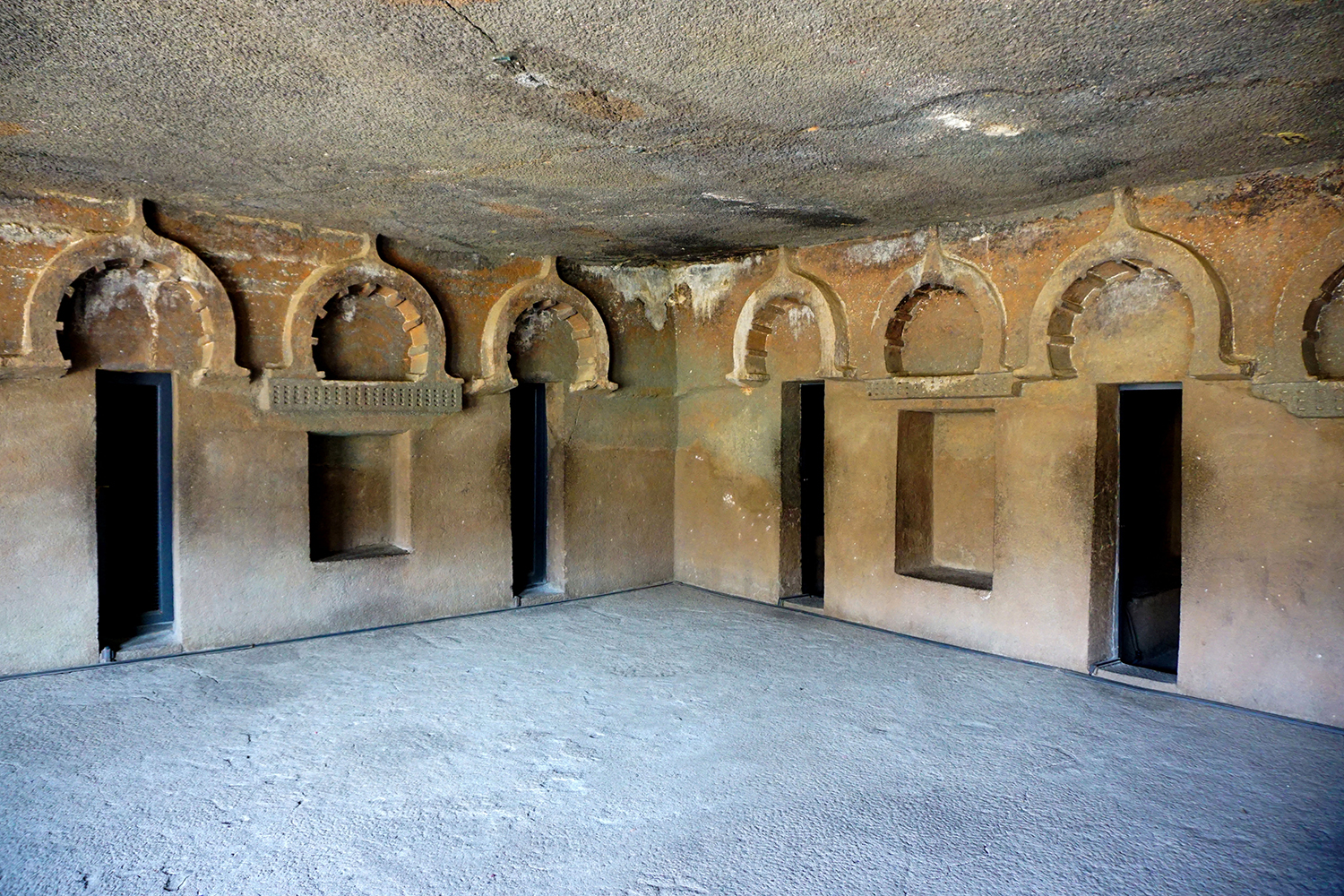ARTICLE
Ajanta Caves
The second period of excavations has been dated to the reign of the Vakataka dynasty. Some scholars have argued that most of these occurred in the fifth century CE during the reign of the Vakataka king Harisena; however, this view is contested. Caves of this phase are associated with Mahayana Buddhism; they are characterised by ornately carved facades and interiors as well as figurative depictions of the Buddha and bodhisattvas. Inscriptions found in some of the caves indicate that they were patronised by the Vakataka royal family and their ministers. Scholars suggest that these excavations involved careful surveys of the land and significant planning beforehand, and required the work of labourers, architects and members of the Buddhist sangha from across Vakataka territories. While some caves appear to have been occupied and extensively used for worship, many were left incomplete. This has led some scholars to argue that construction was abruptly brought to a halt, presumably after the death of Harisena.
The caves at Ajanta can broadly be classified into two types: chaityas or chaityagrihas and viharas or sangrahamas. The chaityas, which are fewer in number, are apsidal prayer halls with a stupa at the end of the nave. Some chaityas feature a sculpture of the Buddha in front of the stupa. Most caves from the first period are chaitya caves, but only two from the second period (Caves 19 and 26) can be classified as such. These latter caves are considered to be among the finest at the site, with Cave 19 believed to have been a grand, perfumed hall.
The majority of the caves at Ajanta are viharas, containing the residential cells of monks. While viharas of the first period are characterised by simple cells surrounding a rectangular hall, halls of the second phase include ornamental pillars and pilasters with spiral fluting, and detailed carvings on the capital brackets. In later phases of patronage, shrines for worship were added to the end of the rectangular halls. It is unclear if these later viharas were ever used as residential quarters.
The murals and sculptures at the Ajanta caves are considered to be influenced by Gupta art. Although the Gupta Dynasty did not rule over the Deccan, where the caves are situated, they were related by marriage with some Vakataka rulers. The patrons of the caves may also have taken advantage of the migration of artists due to the decline of the Guptas in the fifth century. The paintings and sculptures in the caves feature many of the characteristics and influences of Gupta art, particularly the manner of representing the Buddha in a meditative state. However, they also display artistic influences from the surrounding Deccan region. The art of the caves also show precision and balance in composition, as well as a highly refined mode of depicting human and divine figures.
The discovery of the caves was instrumental in changing the way Indian art was perceived by the British, with many colonial drafters and artists attempting to reproduce the paintings in the nineteenth and twentieth centuries. The Sir JJ School of Art contributed greatly to this documentation process, which began in the 1870s, led by the school’s principal and British artist John Griffiths. Modernist Indian artists such as Nandalal Bose, Asit Kumar Halder, Abanindranath Tagore and Amrita Sher-Gil also drew considerable inspiration from the style of the Ajanta murals.
The Ajanta caves were listed as a UNESCO World Heritage Site in 1983. While some of the murals in the caves are remarkably well preserved due to the natural absence of light in the caves, many paintings have been lost to natural elements. Some aspects of the caves and the paintings have also been damaged by improper conservation techniques. In recent years, there have been more dedicated efforts towards studying and conserving the caves, as well as the proper restoration of the paintings and other structures at the site.
Bibliography
Our website is currently undergoing maintenance and re-design, due to which we have had to take down some of our bibliographies. While these will be re-published shortly, you can request references for specific articles by writing to hellomapacademy@map-india.org.




